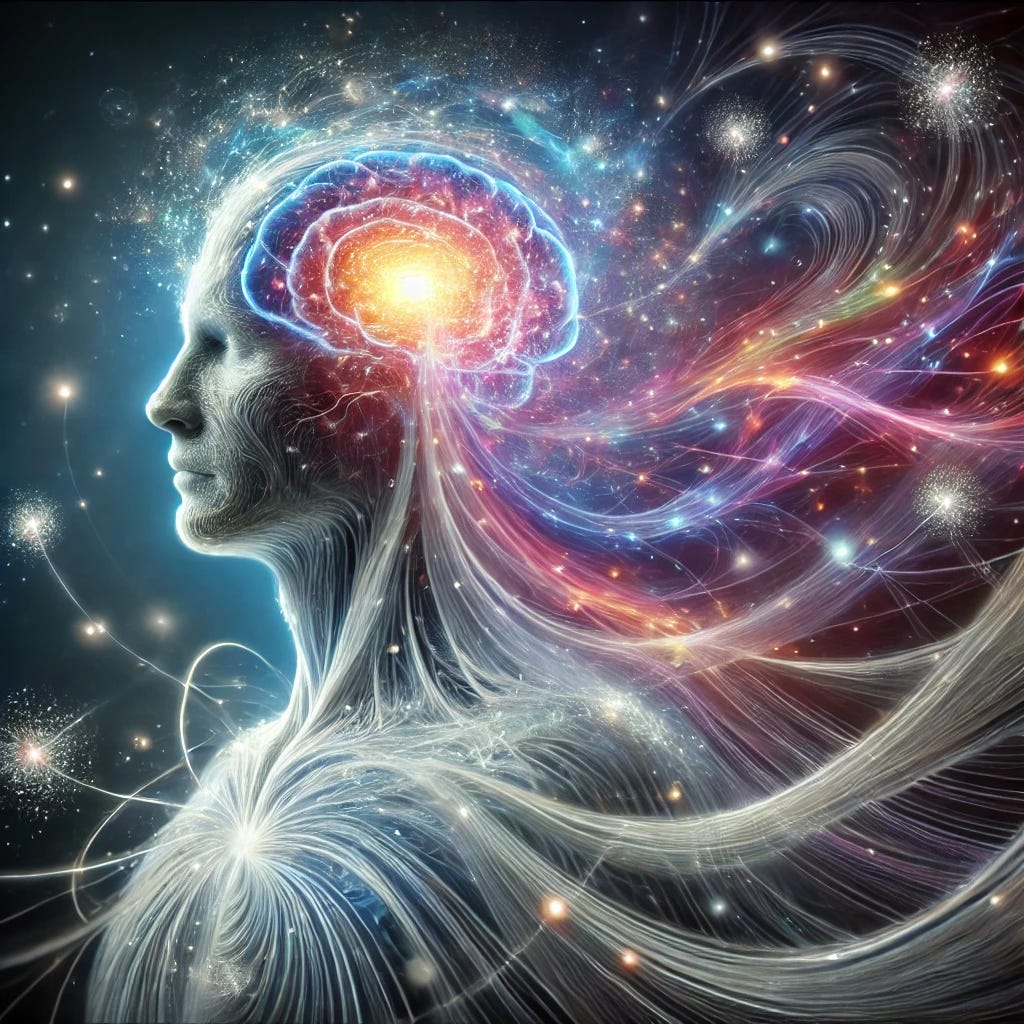The Illusion of Division
Consciousness, the Subconscious, and the Superconscious
"The greatest illusion in this world is the illusion of separation." — Albert Einstein
The Unity of Consciousness: Breaking the Illusion
For centuries, humanity has conceptualized consciousness as a fragmented entity. The conscious mind—the part responsible for logical thought and decision-making—has been viewed as distinct from the subconscious, which governs emotions, instincts, and automatic processes. Meanwhile, mystics and esoteric traditions speak of a superconscious—a higher, transcendent awareness connected to universal intelligence. But what if this division is merely an illusion, a construct of our limited perception rather than an inherent reality?
The idea that consciousness is divided into different layers stems from our need to categorize and understand an experience that transcends physical explanation. However, emerging research in both neuroscience and quantum physics suggests that consciousness is not a series of separate compartments but a continuum, where different levels interact dynamically, influencing one another in ways we are only beginning to comprehend.
The Neuroscience of Consciousness
Modern neuroscience suggests that consciousness is far more fluid than traditional models imply. Studies in brain function indicate that decision-making and perception are deeply influenced by subconscious processes long before the conscious mind rationalizes them. This implies that much of what we consider "conscious thought" is actually the result of a deeper, unseen processing mechanism.
The illusion of separation between these layers of the mind arises due to our brain's filtering mechanisms, which prioritize certain types of information while relegating others to the background. This is necessary for our survival—imagine being aware of every single detail around you at once. However, this filtration also reinforces the perception of separateness.
Neuroscientists have discovered that brain waves, such as gamma waves, are associated with higher states of consciousness, including deep meditation, problem-solving, and heightened intuition. These findings blur the boundaries between the conscious, subconscious, and superconscious, indicating a continuous interplay rather than rigid separations. Moreover, research into neuroplasticity—the brain’s ability to rewire itself—demonstrates that we are not passive recipients of consciousness but active participants in shaping our reality through thought, perception, and intention.
Quantum Science and the Role of the Observer
Quantum mechanics further complicates our understanding of consciousness. The famous "observer effect" suggests that the act of observation itself can influence quantum particles. Some interpretations argue that consciousness plays a fundamental role in shaping reality. Could it be that what we consider "separate" aspects of consciousness are simply different expressions of the same fundamental force?
Physicists such as John Wheeler and David Bohm proposed that the universe might be a "participatory" one, where consciousness is not merely an observer but an active participant in reality’s unfolding. Bohm’s concept of the "implicate order" suggests that all reality is interconnected at a deeper level than what we perceive, reinforcing the idea that our divisions of mind are merely constructs.
If consciousness interacts with the physical world at a quantum level, it challenges the conventional view that the mind is merely a byproduct of the brain. Instead, it suggests that consciousness could be a fundamental aspect of the universe, influencing reality itself. This perspective aligns with ancient spiritual traditions that describe consciousness as a universal field of awareness rather than a localized phenomenon.
The Implications: A Unified Field of Awareness
If consciousness is indeed a unified field rather than a set of separate compartments, what does this mean for us? It suggests that:
Our subconscious is not something buried and inaccessible but an active and influential component of our daily lives.
The superconscious, often described in mystical traditions as the "higher self," is not separate from us but an ever-present awareness available to those who attune to it.
Consciousness itself might be the fundamental fabric of reality, influencing and shaping the material world in ways we are only beginning to understand.
The boundaries between what we consider "self" and "other" may be far more fluid than we assume, opening new avenues for understanding collective consciousness and human connection.
Bridging the Divide: Practical Applications
How can we tap into this interconnected consciousness in a more intentional way?
Meditation and Mindfulness – Practices that quiet the conscious mind allow subconscious insights to emerge and align with deeper awareness.
Lucid Dreaming and Hypnotherapy – These techniques can help integrate subconscious knowledge into waking life, demonstrating that the boundaries between states of consciousness are permeable.
Quantum Visualization – Engaging in visualization techniques with the understanding that consciousness influences reality may lead to profound shifts in personal experience.
Interconnected Awareness – Recognizing that what we experience as "separate" minds may actually be a single field of consciousness shifts our interactions with others and the world around us.
Journaling and Reflective Practices – Writing down insights from dreams, meditation, or deep contemplation can help bring subconscious awareness into conscious understanding.
Energy Work and Breathwork – Practices like Reiki, Qigong, or controlled breathing techniques can help tune the body and mind to higher states of awareness.
Shifting Perception of Reality – If consciousness actively shapes our experience of reality, cultivating thoughts of possibility and interconnectedness can fundamentally alter our engagement with the world.
Conclusion: Embracing the Wholeness of Mind
The illusion of division between the conscious, subconscious, and superconscious is a limitation imposed by our perception. As neuroscience and quantum science continue to explore the mysteries of consciousness, they point toward a more holistic understanding of awareness—one in which the mind is not segmented but a fluid, interconnected whole. By recognizing and embracing this unity, we unlock the potential to live more consciously, creatively, and harmoniously with the world around us.
Perhaps the greatest shift we can make is to recognize that we are not isolated minds navigating a separate reality but aspects of a unified field of consciousness, capable of influencing and co-creating the world in ways we are only beginning to grasp. In doing so, we move beyond the illusion of division and embrace the full spectrum of our awareness—an awareness that is infinite, interconnected, and profoundly powerful.


